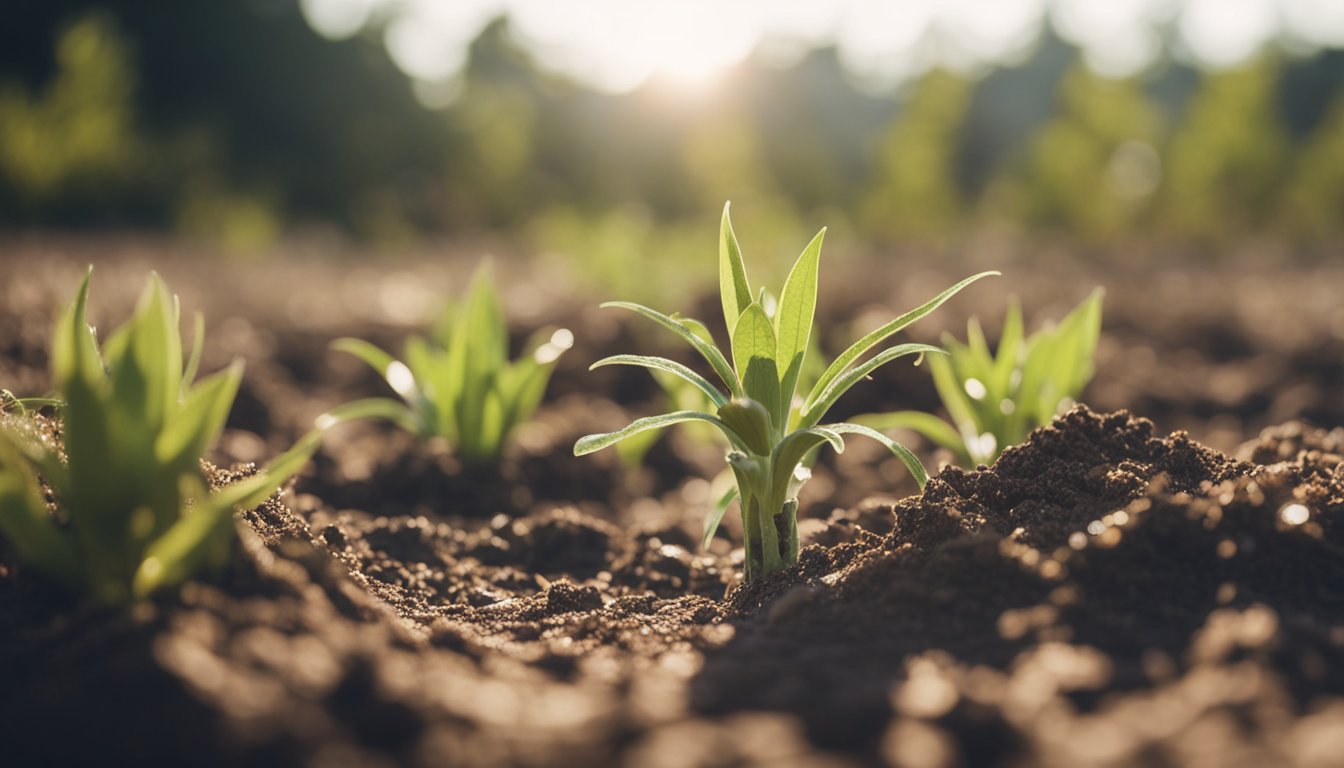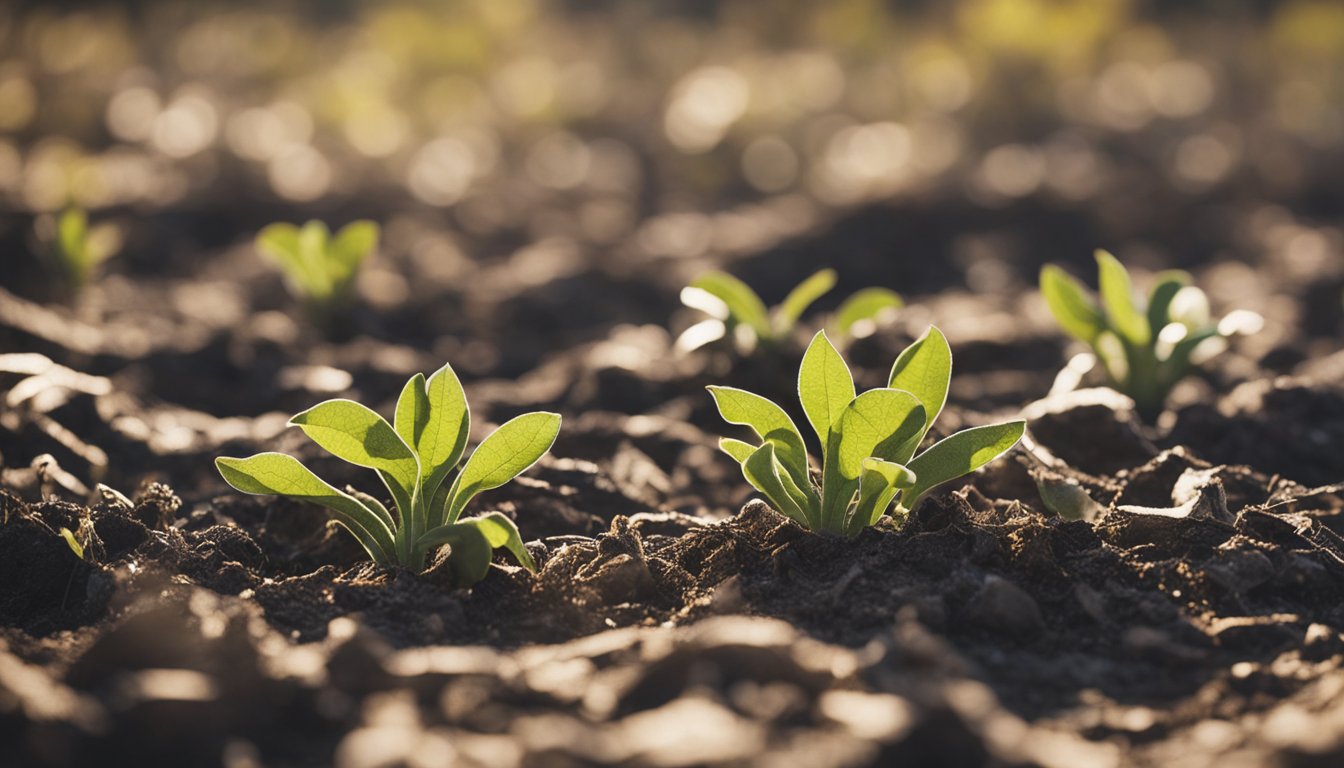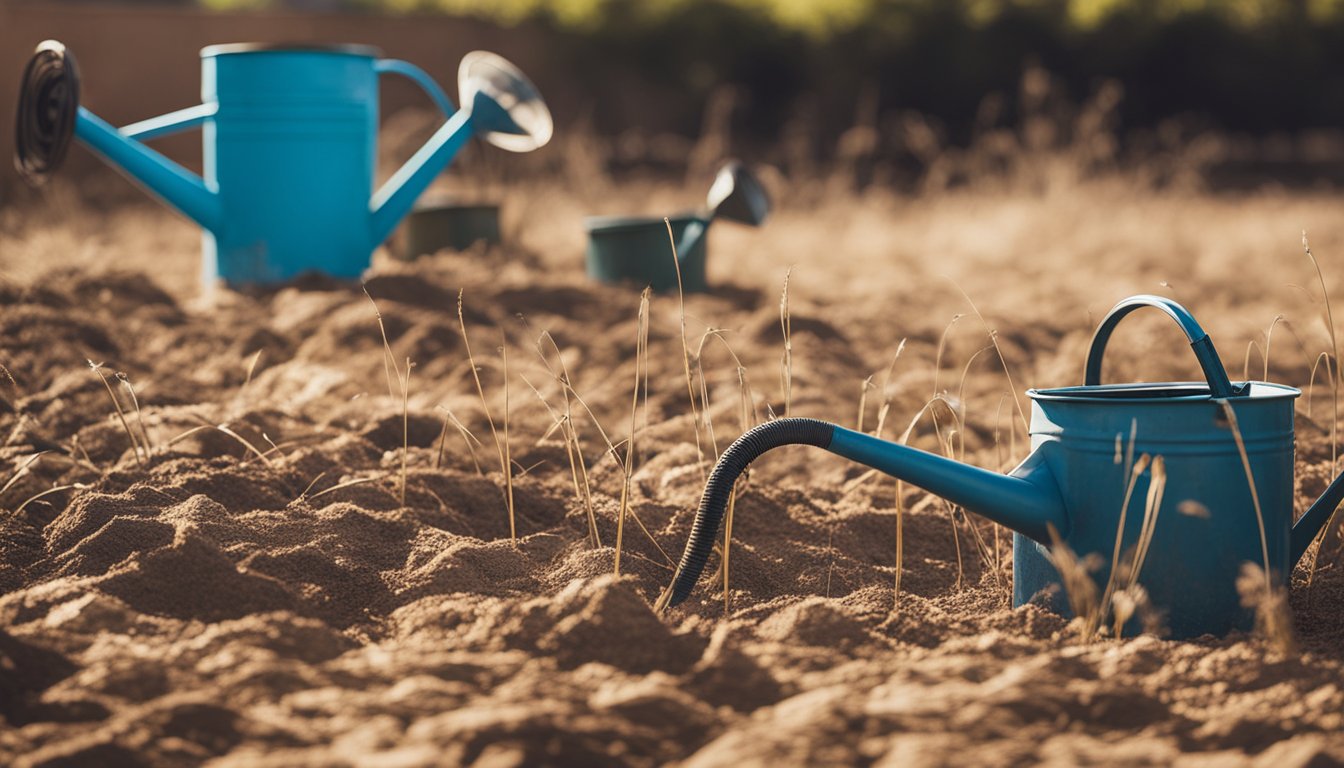Late updated: 12 Aug 2024 13:08
Written by: Emily Thornton
Managing UK Gardens During Drought Conditions: Expert Tips for Thriving Landscapes
Managing gardens in the UK during drought conditions can be challenging, but with the right strategies, our gardens can thrive even in the driest times. Drought not only affects the immediate appearance of lawns and flowerbeds, but it also impacts plant health and garden ecosystems. It's essential to adopt water-wise gardening practices to conserve moisture and keep plants healthy.

In addition to watering efficiently, it's crucial to choose plants that are well-suited to dry conditions. Drought-resistant species and well-mulched garden beds help retain moisture and reduce water evaporation. This approach not only saves water but also ensures our gardens remain vibrant and resilient.
We must also pay attention to garden wildlife, as they too suffer during droughts. Creating shaded areas, avoiding excessive tidying, and leaving certain plants uncut can provide necessary shelter and food for animals. These small changes can make a significant difference in maintaining a balanced garden ecosystem during dry spells.
Key Takeaways
- Implement water-wise gardening practices and choose drought-resistant plants.
- Create shaded areas and use mulch to retain moisture in garden beds.
- Support garden wildlife by creating shelters and preserving certain plants.
Understanding Drought and Its Impact on Gardens

Drought in the UK is increasingly affecting garden maintenance, influencing soil conditions and plant health. As gardeners, it's essential to adapt our methods to mitigate these impacts.
Defining Drought Conditions in the UK
Drought in the UK can be deceptive. Despite our reputation for wet weather, periods of dry conditions can become prolonged and severe. Drought refers to a significant shortage of water that adversely impacts the environment, including gardens.
This typically results from a combination of factors such as reduced rainfall, high temperatures, and increased water demand. Recognising these conditions early can help us prepare and protect our gardens efficiently.
Consequences for Soil and Plant Health
The health of soil and plants suffers during drought. Soil structure can degrade, leading to poor aeration and decreased water retention. We might observe that the soil becomes compacted and less fertile, making it harder for plants to thrive.
Plants, especially those not adapted to dry conditions, may exhibit stress signs like wilting, discoloured leaves, and stunted growth. In the worst cases, extended drought can lead to plant death, severely impacting the garden's biodiversity.
Strategies for Drought Resilience
Creating resilience against drought involves several strategies. We should start with proper soil preparation. Conducting a soil test helps in understanding its composition, pH, and nutrient levels. Ensuring the soil is well-draining is crucial for supporting drought-tolerant gardens.
Integrating drought-resistant plants into our garden design can minimise the effects of prolonged dry spells. These plants typically have deep root systems that can access deeper water reserves. Additionally, employing water conservation techniques such as mulching, drip irrigation systems, and rainwater harvesting can significantly reduce water usage while maintaining garden health.
By focusing on these practices, we can better manage our gardens during drought conditions and enhance their resilience to future challenges.
Effective Garden Management During Drought
Proper management is crucial to maintaining a healthy garden during drought conditions. By focusing on water conservation, choosing suitable plants, and employing effective mulching techniques, we can create a resilient and thriving garden.
Water-Saving Techniques and Water Collection
During droughts, efficient water usage is essential. We should water plants early in the morning or late in the evening to reduce evaporation. Using drip irrigation systems can also direct water precisely to plant roots, minimising wastage. Collecting rainwater in barrels provides a sustainable source of water. Greywater from baths and sinks can be reused for non-edible plants, ensuring no water goes to waste.
Choosing Drought-Resistant Plants
Opting for drought-tolerant species simplifies garden maintenance. Plants like Lavender, Sedum, and Cistus thrive with minimal water. We should also consider native plants as they are adapted to local conditions. Grasses such as Stipa are excellent for both aesthetic appeal and drought resistance. Grouping plants with similar water needs creates zones that can be watered more efficiently.
Mulching and Organic Matter for Retaining Moisture
Adding a thick layer of mulch helps retain soil moisture and reduce weed growth. We should aim for at least a 5cm layer, using materials like composted bark, mushroom compost, or well-rotted farmyard manure. These organic matters improve soil structure and water-holding capacity. Additionally, mulching insulates soil, keeping it cooler during hot weather.
Lawn Care and Low Maintenance Alternatives
Lawns can suffer significantly during drought. We can reduce mowing frequency and leave grass clippings on the lawn to retain moisture. For low maintenance, replacing traditional lawns with drought-tolerant ground covers or ornamental grasses is beneficial. Alternatives like gravel gardens or wildflower meadows not only conserve water but also enhance biodiversity.
By integrating these strategies, our gardens can remain vibrant and healthy even in challenging drought conditions.
Frequently Asked Questions

Addressing the challenges of managing UK gardens during drought conditions requires specific strategies. We cover the best vegetables for drought conditions, soil improvement methods, effective watering techniques, and more.
Which vegetables are best suited for drought conditions in the UK?
Vegetables like courgettes, runner beans, and carrots adapt well to dry conditions. They have deep root systems that allow them to access moisture from deeper soil layers. Mulching can help retain soil moisture for these plants.
How can I improve arid soil to better support plant life?
Adding organic matter such as compost or well-rotted manure enhances soil structure and water retention. Incorporating soil conditioners like biochar can also improve moisture content and soil health. Regularly testing the soil can help fine-tune amendments.
What are some effective methods for watering gardens during a drought?
Drip irrigation systems and soaker hoses are efficient ways to water plants by reducing evaporation losses. Watering early in the morning or late in the evening minimizes evaporation. Rainwater harvesting using water butts can also provide a sustainable water source.
Can you suggest some drought-resistant border plants for UK gardens?
Plants like lavender, sedum, and ornamental grasses such as Descampsia cespitosa are excellent drought-resistant options. These species thrive with minimal watering once established and contribute to a resilient garden landscape.
Which crops require minimal water and are suitable for UK climates?
Certain herbs like rosemary and thyme, along with crops such as garlic and onions, require less water and perform well in dry conditions. These crops are well-suited to the UK's changing climate patterns.
How do I maintain a garden in prolonged dry periods?
Mulching with organic materials like bark or straw helps retain soil moisture and suppress weeds. Grouping plants with similar water needs ensures efficient watering. Using windbreaks to reduce water loss through evaporation also helps maintain garden health.
